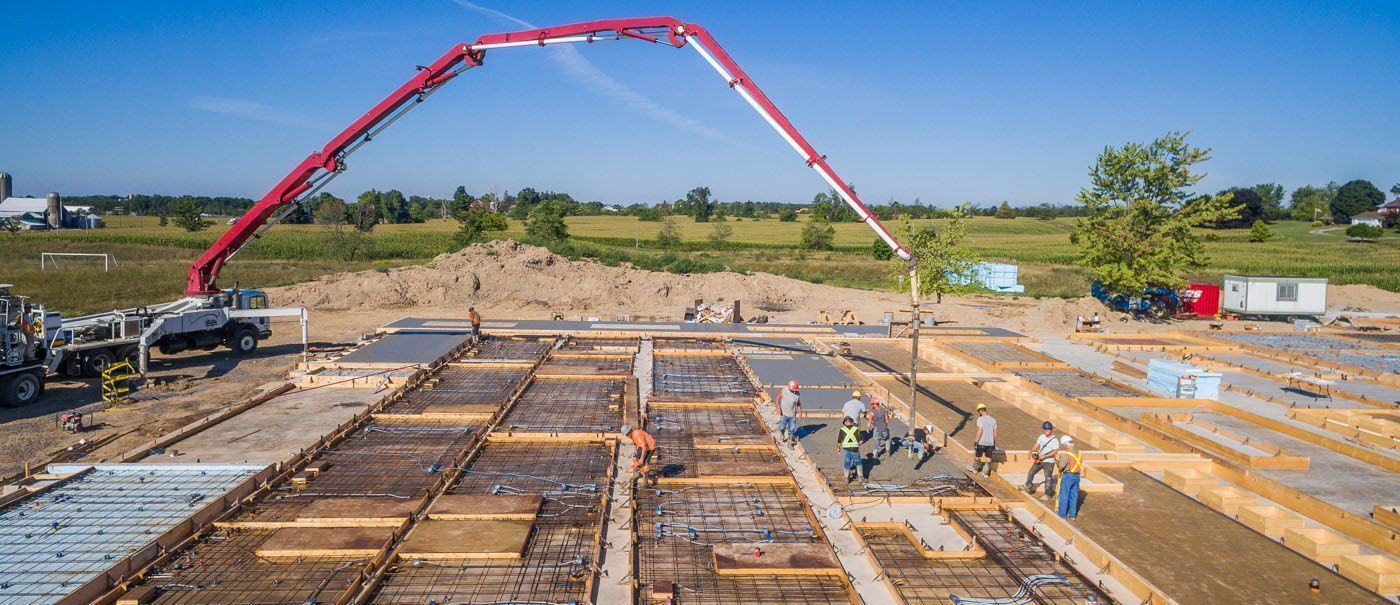How Tilt-Up Can Respond to Construction Cost Fluctuation in Ontario

Fluctuating construction costs due to unpredictable and unstable external forces and new building codes have made the process for long-term cost projections more difficult now than ever before.
The Issue of Cost Predictability and Cost Fluctuation
While the demand for new construction continues to grow at a healthy rate, construction costs have not demonstrated the same measured stability. External forces have resulted in substantial rate increases for a wide range of integral construction supplies, raw materials and services, making the process for long-term cost projections significantly more difficult.
Rising Construction Costs with New Building Codes
Traditionally, Ontario has been a North American leader in energy efficient Building Code standards. The 2012 Building Code maintained this leadership and increased energy efficiency requirements for houses and large buildings, through provisions which came into effect on January 1, 2017.
As a result, a house constructed after January 1, 2017 is 15 percent more energy efficient than a house constructed in 2012. A large building constructed after January 1, 2017 is 13 percent more energy efficient than a large building constructed in 2012.
By 2030, it is envisioned that Ontario will have put in place buildings-science expertise, production capacity for buildings materials, and the technologies and workforce to maintain and build near-net-zero buildings.
Cost predictability and fluctuation due to these new building codes disrupt the Ontario construction industry as some construction methods will rise in price, while others will fall dramatically.

Disruption in the Ontario Construction Industry
Steel and concrete remain the primary disruptive external forces for increased construction supply costs. A massive increase in international demand for steel used for steel joists, beams, roof systems, coupled with reduced supplies of raw materials and a fluctuating American economy, has driven the price for steel up significantly and made long-term cost estimating for a wide range of construction projects virtually impossible.
While concrete prices have not inflated as dramatically as steel’s, both price and availability have presented significant challenges to cost estimators and general contractors. As well, fluctuating costs of gasoline and petroleum products can significantly increase manufacturing and delivery prices for virtually every product and process in construction.
Cost Predictability with Tilt-Up Construction
The availability and price for steel and concrete have long been significant advantages of Tilt-Up construction. Project materials such as concrete, steel, and insulation are widely available. And with access to local dealers for needed project materials, Tilt-Up construction projects can keep costs down and ensure that project estimates are not so out of scope. Easy access to locally-sourced materials also results in fewer construction delays.
In addition, Tilt-Up does not require a team of highly skilled people. Although some specialists are needed, general construction workers are sufficient and can often be hired locally.

Will Tilt-Up Disrupt the Ontario Construction Market?
Tilt-up construction allows for a compressed schedule that is extremely reliable, due to the availability of locally created raw materials and the ability to overlap skills.
In addition, Tilt-up construction provides numerous advantages over steel buildings or traditional construction in terms of its ability to deal with cost predictability and cost fluctuation within the framework of new building codes introduced in 2017.
The availability and price of steel and concrete, access to locally-sourced project materials and workforce helps keep project costs down and allows for more accurate and cost-efficient job estimates. As a result of this, we see Tilt-Up becoming a more dominant player in the Ontario construction market over the next 5-10 years.

